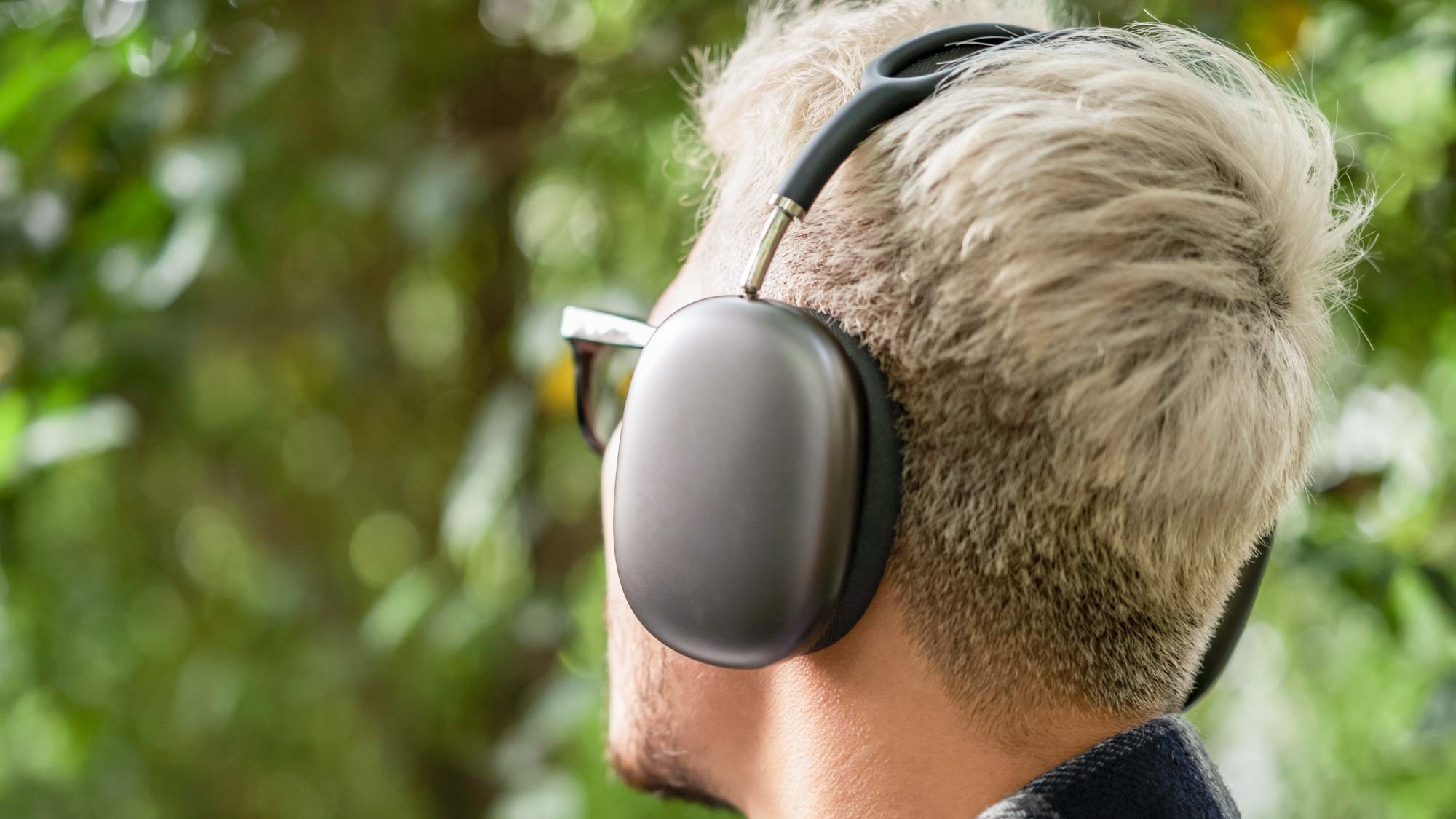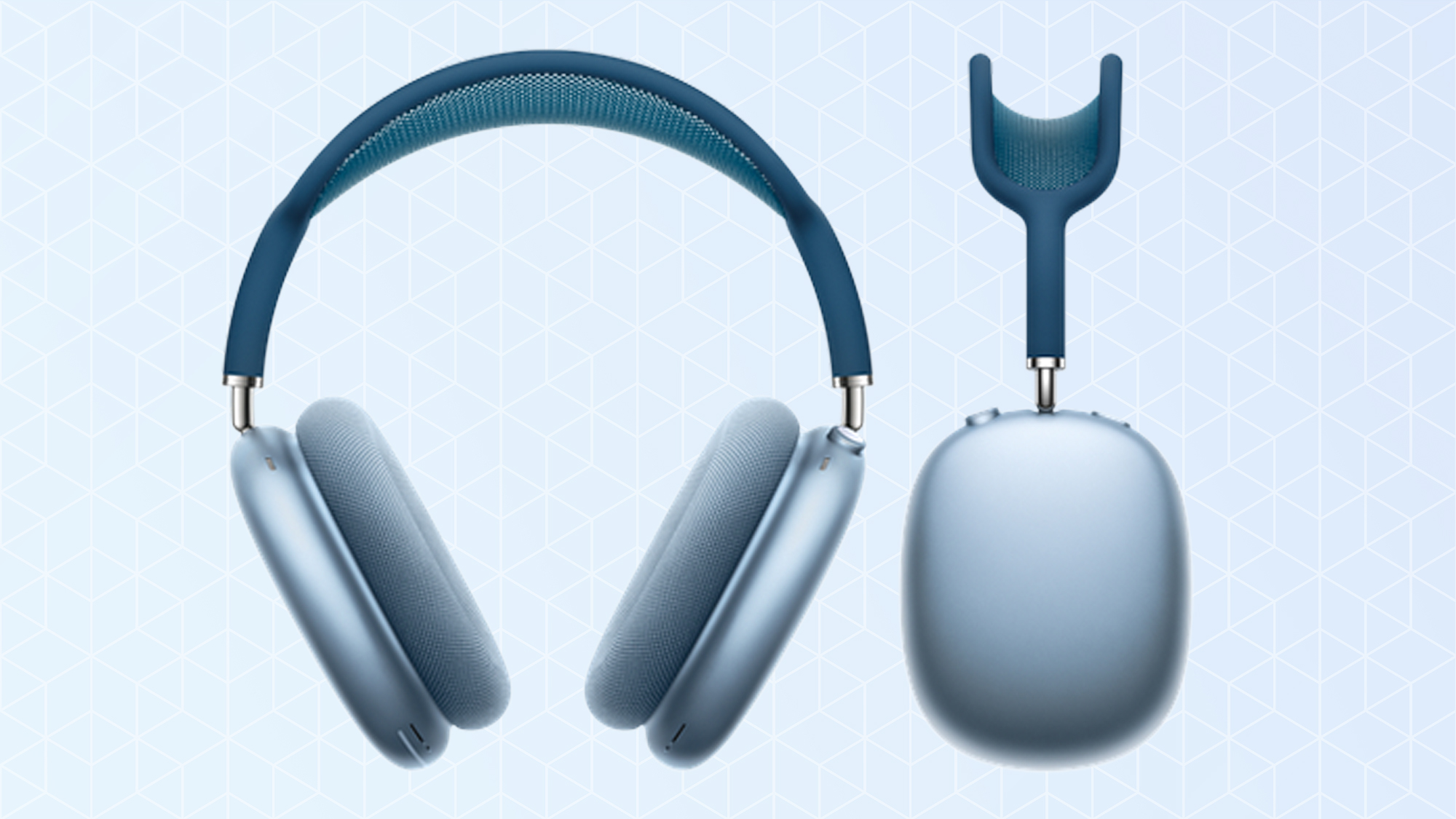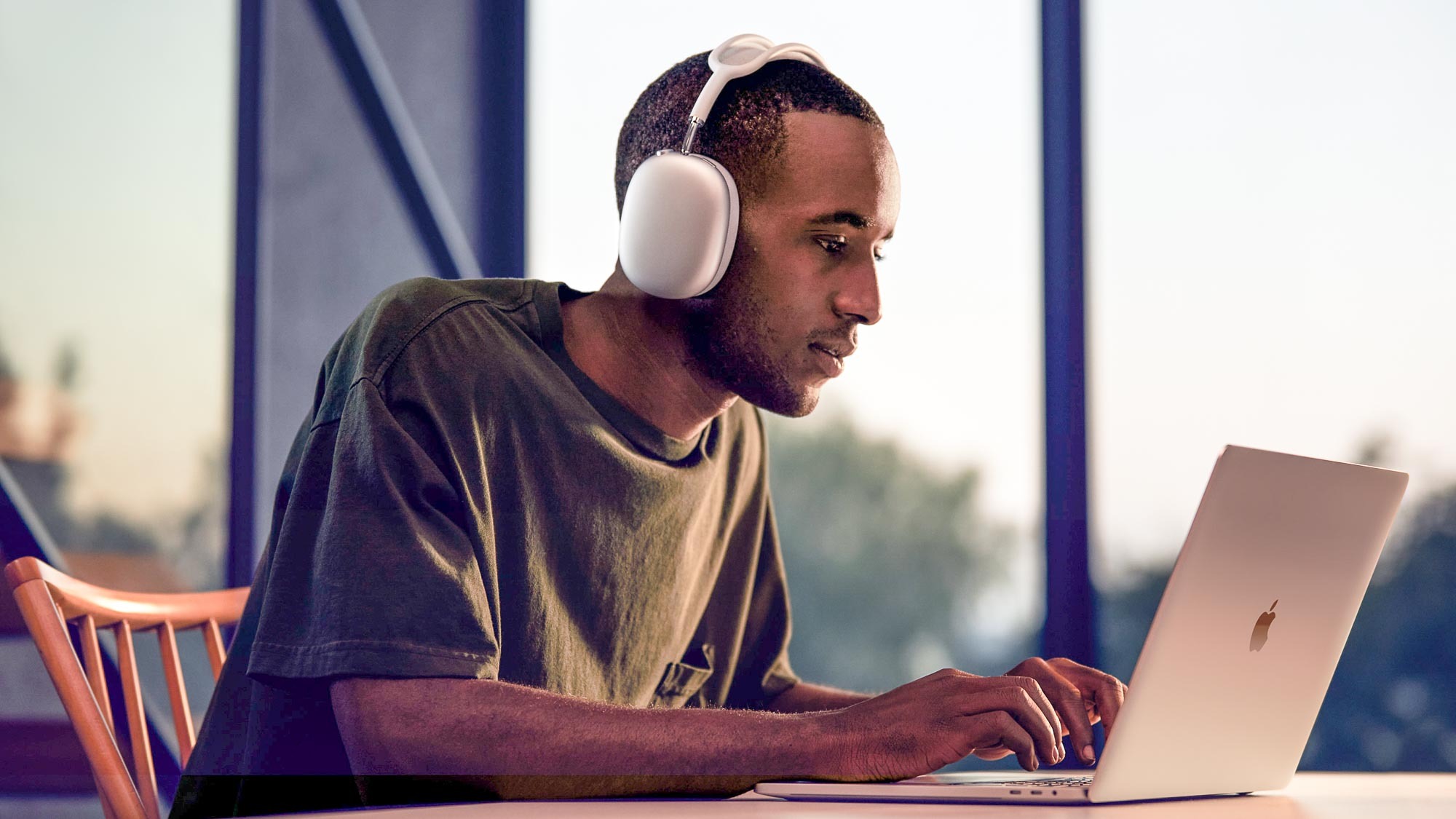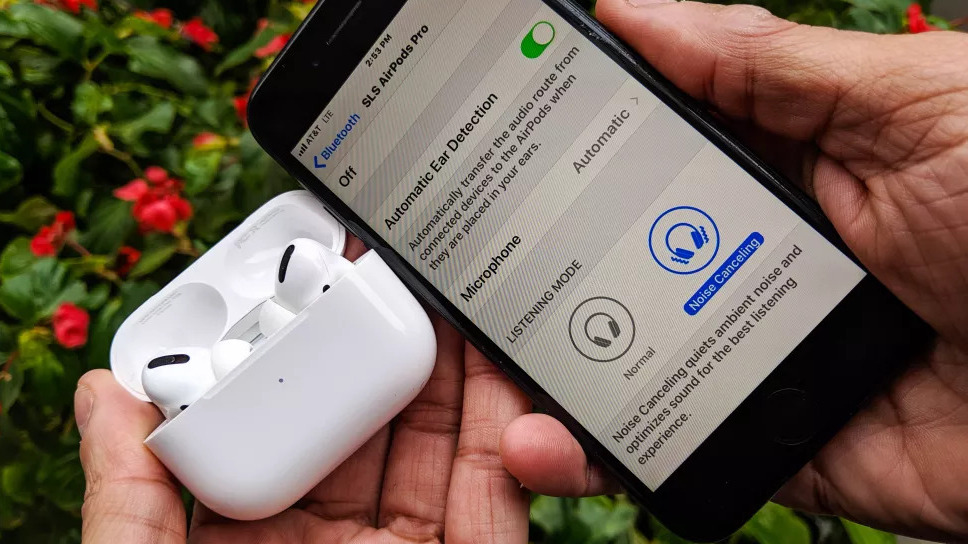What is Apple spatial audio? How it works and how to use it
Spatial audio makes watching movies with AirPods more immersive — here’s how you can get it

If you've ever wondered what Apple spatial audio is and whether you need it, then you've come to the right place. Spatial audio is 360-degree sound format that recreates a surround effect through a pair of speakers, including headphones and even a tiny pair of earbuds.
When spatial audio first arrived it was mostly seen as a format for enhance video playback when using Apple's original AirPods Pro earbuds and AirPods Max headphones, but spatial audio content is also available on Apple Music as well.
But what is spatial audio, and how do you use it? In this guide we’ll explain everything you need to get this 3D format up and running, from making sure you have the right hardware to finding content that allows you experience full spatial audio immersive sound.
What is Apple spatial audio?

Spatial audio is how Apple brands its immersive 360-degree sound tech, though the concept is sometimes referred to as “spatial audio” in more general terms as well. It’s essentially a form of digital surround sound wherein the origin points of different sounds can appear to envelop you from all directions.
That sounds like plain, old, living room surround sound, right? Except with certain hardware, spatial audio can keep those origin points in place even when the speakers themselves are moving, namely on headphones like Apple's AirPods Pro, AirPods Pro 2, and AirPods Max.
Say you’re watching a film on one of the best iPhones, where someone is loudly walking along the left of the screen. If the movie is compatible with spatial audio, you could turn your head to the left and the footsteps would then sound like they were coming from straight in front of you.
Being a form of 360-degree audio, spatial audio’s effect isn’t limited to a flat axis either. Like Dolby Atmos or DTS:X, spatial audio can add a sense of height, making TV and movie playback even more immersive. In fact, spatial audio piggybacks off Atmos, as content you can view was originally mastered for Dolby's platform.
Get instant access to breaking news, the hottest reviews, great deals and helpful tips.
How do I use spatial audio?

The most important thing is making sure you have the right hardware. Right now, spatial audio-compatible headphones run to AirPods Pro (both 1st and 2nd Generation models), AirPods Max, AirPods (3rd Generation), and Beats Fit Pro. Several of the older models didn't originally launch with spatial audio support, but will be supported automatically with the latest firmware update.
However, for Apple Music spatial audio content, Apple says that any headphones will be able to play songs with spatial audio. On Apple and Beats headphones with a W1 or H1 chip, spatial audio will be enabled automatically, but for any other headphones you just need to switch Dolby Atmos to "Always On" in Apple Music app's settings.
Apple Music's take on spatial audio can also be played through the integrated speakers of newer Apple devices so long as they're running iOS 15.1 or later. The list of spatial audio compatible Apple devices extends to the new HomePod 2, the built-in speakers of an iPhone 7 or later, or any of these iPad models:
- iPad Pro 12.9‑inch (3rd generation) and later
- iPad Pro 11‑inch, iPad Air (3rd generation) and later
- iPad (6th generation) and later
- iPad mini (5th generation) and later
In much the same way as Apple Music offers spatial audio content with any headphones, Netflix now also offers spatial audio support across all its subscription tiers at no additional cost, enabling listeners to experience the immersive sound format through your TV speakers, or a pair of add-on speakers.
For video content, you'll need compatible headphones and a source device. Apple TV 4K offers spatial audio, and macOS devices like the MacBook Pro. However, not all older Apple devices will work so here’s a list of spatial audio-compatible mobile devices for video: iPhone 7 or later, iPad (6th Gen) or later, iPad Air (3rd Gen) or later, iPad mini (5th Gen), iPad Pro 12.9 inch (3rd Gen) or later, iPad Pro 11 inch (1st gen) or later.
With compatible hardware you’re almost set, and remember that you can turn spatial audio on or off at your choosing. To turn if off while you’re already watching a video, open the Control Center, press and hold the volume control then tap on the spatial audio option to disable it.
To turn spatial audio on or off for everything, open Settings and navigate to the Bluetooth menu. In the list of connected devices, tap the “i” icon next you’re your AirPods then select whether to turn spatial audio on or off.
Apple also says that Apple Music's spatial audio content will be playable through the speakers of the "latest versions of iPhone, iPad, and Mac," though we'd be surprised if the effect was nearly as strong as if you were wearing headphones.

Also important to note is that media content must be available in the 5.1, 7.1 or Dolby Atmos surround sound formats for it to work with spatial audio.
Amazon Music HD and Tidal music streaming services also provide Dolby Atmos-compatible songs. Still, Amazon limits Atmos playback to its own Echo speakers and Tidal seems to be keeping its immersive capabilities exclusive to Sony’s spatial audio rival, 360 Reality Audio.
You do at least have a choice of where to stream compatible TV shows and movies. Apple TV Plus, HBO Max, Disney Plus, Hulu and now Netflix all support spatial audio via their respective Atmos-enabled content.
How does spatial audio work?

There are a few things that are needed to make spatial audio happen. First, sound engineers will map the individual audio parts of a piece of content — dialog, sound effects, music soundtrack and so on — to specific points on a digital 3D space. Imagine a sphere build around the listener, with each sound source placed around it. This allows for those individual sounds to seemingly come from either side, behind, above or below you. Engineers can also adjust the “distance” of sounds so that they seem closer or further away.
Obviously, headphones don’t have a series of satellite speakers for “true” surround sound, and they can’t achieve a sense of height by bouncing sound off ceilings like Dolby Atmos can. So spatial audio’s surround sound effect needs to be purely digital.

Here’s where it gets a little complicated. 360-degree audio playback on headphones is achieved though Head Related Transfer Function (HRTF) filters, which digitally adjust how sounds are played so that they bounce into your ears in such a way that they appear to originate from a certain direction. The tech requires both ears for your brain to perceive the effect of sound originating from a three-dimensional space, even when it’s coming from a set of two drivers either side of your head.
With an encoded source track, compatible playback device and headphones, spatial audio can then use head-tracking to create that feeling of being able to look around the 3D space. The latest AirPods and Beats designs contain accelerometers and gyroscopes that track your head movements in relation to an anchor device: the phone or tablet playback source that the headphones are paired to.
Because the anchor device contains the screen on which you’re watching the spatial audio-mastered content, the tech can make sure sounds are played from directions consistent with the on-screen action, even as you turn your head in different directions inside that 3D space.
As not every headphone has a gyroscope and accelerometer fitted in them for head tracking, many 'spatial audio' implementations are less sophisticated 3D audio effects. Instruments and vocals will sound like they're surrounding you, but without the origin points of sounds staying in place as you turn your head.
Contributions from: James Archer
More from Tom's Guide
- How to turn on spatial audio on your iPhone
- Sonos Era 300 is built for spatial audio
- How to track Spatial Audio content in your Apple Music library

Lee was Tom's Guide's audio editor, where he covered all things audio for Tom's Guide, including headphones, wireless speakers and soundbars and loves to connect and share the mindfulness benefits that listening to music in the very best quality can bring. As a former editor of the U.K.'s Hi-Fi Choice magazine, Lee is passionate about all kinds of audio tech and has been providing sound advice to enable consumers to make informed buying decisions since he joined Which? magazine as a product tester in the 1990s. Lee has joined the passionate audio experts at audiograde.uk where he writes about luxury audio and Hi-Fi.
